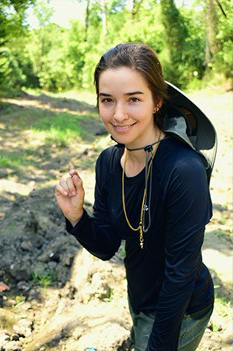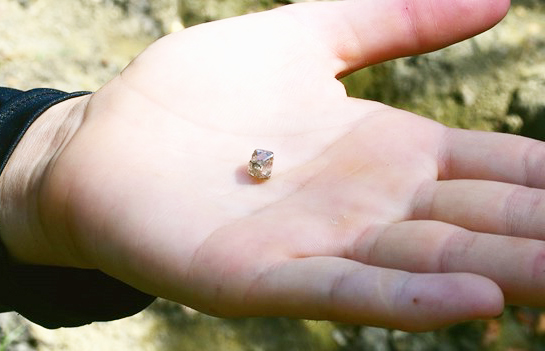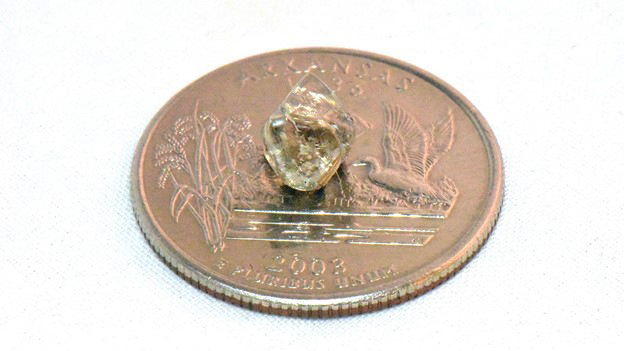Diamonds on the soles of her shoes
Micherre Fox, a 31-year-old Manhattan woman, decided years ago that she wanted to find her own diamond for her engagement ring. On July 8, she traveled to Crater of Diamonds State Park in Arkansas to begin her search. “There’s something symbolic about being able to solve problems with money, but sometimes money runs out in a marriage,” Fox said in a statement. “You need to be willing and able to solve those problems with hard work.” Micherre spent three weeks scouring the diamond park’s 37.5-acre search area. On July 29, her final day at the park, she noticed a glimmer near her feet. At first, she thought it may have been a spiderweb, but upon closer inspection, she realized it was a diamond, according to the news release. “Having never seen an actual diamond in my hands, I didn’t know for sure, but it was the most “diamond-y diamond’ I had seen,” Fox said in a statement. Park staff confirmed the gem was a diamond, and Fox was immediately flooded with emotion — falling to her knees crying and then laughing, according to the news release.
The gem — which is about the size of a human canine tooth — is the third-largest diamond discovered so far this year at Crater of Diamonds State Park. Micherre has since named her gem “Fox-Ballou Diamond,” after the last names of her and her partner, according to the news release. Since the Crater of Diamonds became an Arkansas state park in 1972, park visitors have discovered and kept over 35,000 diamonds. Adults can participate in gem hunting at the park, which is open to the public, for a fee of $15 per day. Earlier this year, a Minnesota resident unearthed a 3.81-carat brown diamond in the state park.
Crater of Diamonds is the result of geologic processes that took billions of years—from the migration of continents to the subduction of tectonic plates that have often caused volcanos throughout our planet’s history. And about a hundred million years ago, a volcanic vent made up of magma and gases formed from instability in Earth’s mantle. When gases in the diatreme caused it to rupture near the surface, the region literally exploded with diamonds, leaving behind the 83-acre crater that would someday become a state park. 75,000 diamonds have been found on park grounds since 1906 the largest diamond is now owned by the Smithsonian and on display at the National Museum of Natural History.
Diamonds unlike most rocks and minerals, which form relatively close to the surface, they are born deep in the mantle and tend to be anywhere from a billion to 3.5 billion years old. The idea that a diamond is forever extends far beyond wedding vows—their hardness means through the apocalypse, and some of the strongest tools are made from diamond. Micherre, for her part, is ecstatic over her find, and looking forward to her own forever.
Diamonds are forever:
Fake diamonds should be illegal
after all, they’re “carbon copies.”
What’s the easiest way to cut a diamond’s value in half?
Buy it.
What do you call two diamonds in a healthy relationship?
Carbon dating.
A diamond is a piece of coal made good under pressure.
August 26th Birthdays
1994 – Keke Palmer, 1971 – Melissa McCarthy, 1910 – Mother Teresa, 1918 – Katherine Johnson,
1988 – Evan Ross, 1992 – Dylan O’Brien, 1960 – Branford Marsalis, 1989 – James Harden





